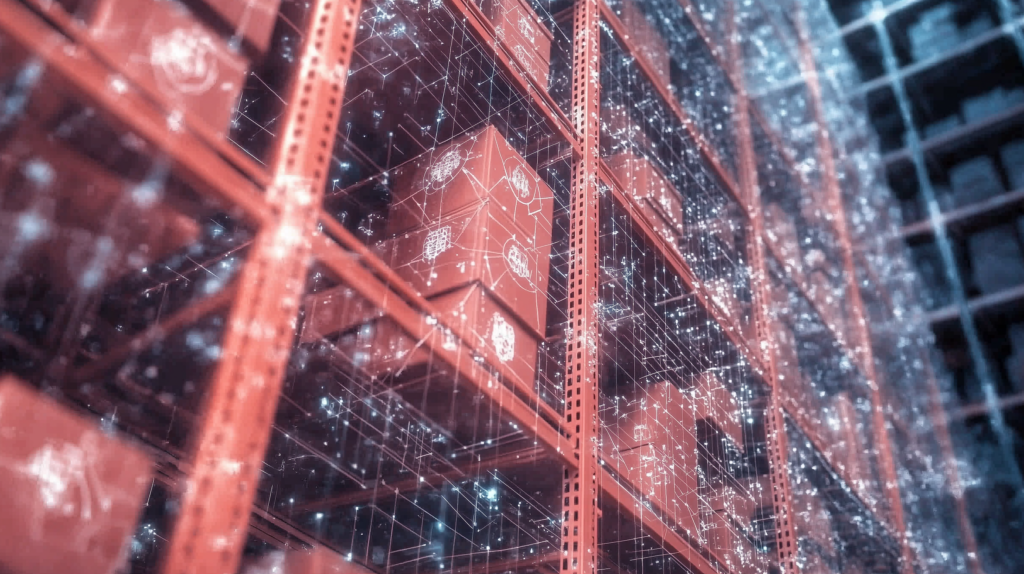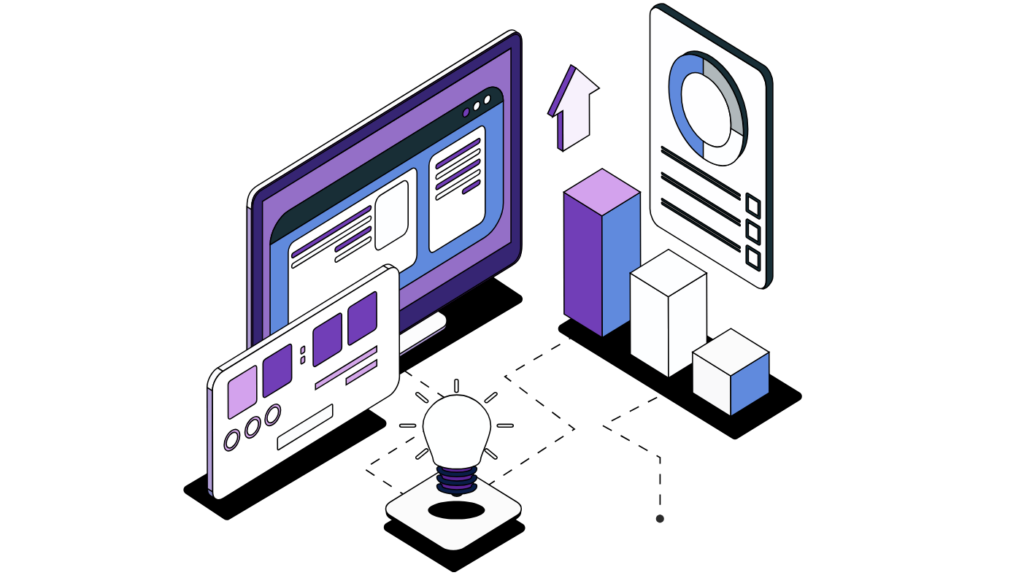L'analyse prédictive pilotée par l'IA domine la gestion des entrepôts
Dans le paysage actuel de la chaîne d'approvisionnement, qui évolue rapidement, les entrepôts qui s'appuyaient autrefois sur une planification basée sur des feuilles de calcul et sur des suppositions se tournent vers des technologies avancées. Au cœur de ce changement se trouve l'analyse prédictive pilotée par l'IA....
Transformer l'analyse des entrepôts, les flux de travail et la gestion des stocks
Le 17 février 2025
Dans le paysage actuel de la chaîne d'approvisionnement, qui évolue rapidement, les entrepôts qui s'appuyaient autrefois sur une planification basée sur des feuilles de calcul et sur des suppositions se tournent vers des technologies avancées. L'analyse prédictive pilotée par l'IA est au cœur de cette évolution. Cette puissante capacité permet non seulement d'optimiser les heures de travail et les flux de travail, mais aussi de mieux contrôler l'analyse des entrepôts, la productivité du travail et la gestion des stocks. Il n'est pas étonnant que l'analyse prédictive pilotée par l'IA domine la gestion des entrepôts. Les tendances de la chaîne d'approvisionnement pour 2025 s'appuieront probablement sur ces avancées, transformant des ensembles de données massives en informations en temps réel qui guident les décisions dans l'instant.
En utilisant un système de gestion du travail (LMS) ou des outils similaires, les professionnels de la chaîne d'approvisionnement peuvent unifier et harmoniser les données afin d'allouer les ressources, de gérer les heures de travail et d'affiner les flux de travail de manière plus efficace. Si l'on y ajoute l'IA, les résultats peuvent réduire les coûts logistiques de 15 %, améliorer les niveaux de stocks de 35 % et les niveaux de service de 65 %.
Lors de notre récent webinaire "Top 7 Supply Chain Trends for 2025", nous avons notamment examiné comment l'analyse prédictive pilotée par l'IA modifie les opérations d'entreposage. Partout dans le monde, les entreprises constatent que l'utilisation d'une plateforme d'analyse prédictive robuste pour faciliter leur prise de décision leur donne un avantage en matière de gestion de la main-d'œuvre, d'analyse d'entrepôt et de décisions d'inventaire quotidiennes. Nous examinons ci-dessous le fonctionnement de l'analyse prédictive pilotée par l'IA, les raisons de son importance et la manière dont vous pouvez l'appliquer à vos propres opérations d'entreposage.

Comment l'analyse prédictive pilotée par l'IA remodèle les opérations d'entreposage et les flux de travail
Les activités des entrepôts s'articulent autour de plusieurs processus clés : les travailleurs réceptionnent les marchandises, stockent et suivent les stocks, traitent les commandes et gèrent les expéditions sortantes. Ces étapes se déroulent quotidiennement dans des environnements qui peuvent passer du calme au chaos en quelques secondes. L'analyse prédictive offre un moyen proactif de faire face à ces fluctuations.
Lorsque votre plateforme d'analyse d'entrepôt se connecte à vos données de commande, à vos heures de travail et à votre système de gestion des stocks, vous bénéficiez d'une visibilité en temps réel sur les flux de travail. Cela signifie que vous pouvez savoir combien de préparateurs ou d'emballeurs sont nécessaires un jour donné, comment les changements d'équipe peuvent affecter la productivité du travail, ou quels types de marchandises seront les plus demandés au cours d'une saison particulière.
Plus important encore, lorsque vos données sont stockées dans un système de gestion du travail (LMS), en appliquant l'analyse prédictive pilotée par l'IA à ces données, vous pouvez prévoir les heures de travail pour chaque fonction. Si vous constatez un pic dans les tâches de réception des stocks, vous pouvez instantanément ajuster vos flux de travail, en réaffectant une partie de votre main-d'œuvre de la préparation des commandes à la réception afin d'éviter les goulets d'étranglement.
Principaux avantages de l'analyse prédictive pour les flux de travail
- Ajustements à la volée: Des alertes et des tableaux de bord en temps réel vous permettent de déplacer les travailleurs là où ils sont le plus nécessaires.
- Réduction des temps morts: les employés passent moins de temps à attendre leurs missions car le système sait à l'avance à quoi ressemblent les tâches de la journée.
- Amélioration de la productivité du travail: Lorsque les personnes sont au bon endroit au bon moment, la productivité augmente et les coûts diminuent.
Lorsque l'analyse prédictive est entièrement intégrée aux opérations de l'entrepôt, les responsables peuvent planifier de meilleures équipes, prévoir les problèmes d'inventaire et répartir les heures de travail de manière proactive. Cette approche permet de maintenir l'harmonie entre toutes les parties en mouvement tout en réduisant le risque d'erreurs ou de retards, ainsi que le nombre d'heures supplémentaires. C'est pourquoi nous avons choisi l'analyse prédictive pilotée par l'IA pour dominer la gestion des entrepôts en tant que tendance numéro un pour 2025.
Pourquoi un système de gestion du travail (LMS) est-il important pour l'analyse des entrepôts ?
Le suivi des indicateurs de performance peut s'avérer difficile sans la technologie adéquate. Un SGA est spécialisé dans la saisie de données cruciales sur le travail, telles que la productivité individuelle des travailleurs, les heures de travail par tâche et le rythme général des opérations de l'entrepôt. C'est l'un des outils les plus importants pour un entrepôt de plus de 20 travailleurs. Collecter ces données est une bonne chose, mais pour avoir un impact sur les opérations, il faut maintenant les utiliser.
En connectant un LMS à l'analyse d'entrepôt, vous ne voyez pas seulement un tableau de bord rempli de chiffres. Au lieu de cela, vous voyez des modèles et des prédictions qui montrent les meilleurs moyens d'augmenter la productivité de la main-d'œuvre. Le système peut repérer les tâches qui prennent plus de temps que d'habitude, identifier les employés les plus performants et prévoir les heures de travail pour les saisons chargées.
Comment un LMS améliore l'analyse prédictive
- Flux de données unifiés: Un LMS combine les données sur les heures de travail, le volume des commandes et l'utilisation des équipements dans un ensemble de tableaux de bord.
- Tableaux de bord exploitables: Les mesures et les alertes en temps réel permettent aux responsables de prendre des décisions en quelques secondes au lieu de quelques heures.
- Rationalisation des flux de travail: Grâce aux informations prédictives, vous pouvez programmer automatiquement le nombre adéquat de travailleurs pour chaque tâche, réduisant ainsi les heures supplémentaires et la confusion.
Lorsque l'analyse prédictive pilotée par l'IA va de pair avec un LMS de qualité, les responsables d'entrepôt peuvent voir exactement où les heures de travail sont passées. Ils peuvent également repérer les inefficacités dans les flux de travail et les corriger avant qu'elles ne nuisent à la productivité.
Ne manquez jamais une histoire. Restez informé de l'actualité de Rebus au fur et à mesure qu'elle se produit.
Meilleures pratiques pour la gestion des stocks pilotée par l'IA avec l'analyse prédictive
La gestion des stocks peut être imprévisible. Un surstockage entraîne des coûts de stockage supplémentaires, tandis qu'un sous-stockage peut se traduire par des ventes manquées. L'analyse prédictive vous aide à éviter ces deux écueils. En introduisant les données historiques des ventes et les signaux de la demande actuelle dans les modèles d'IA, vous pouvez prévoir les niveaux de stock avec une précision beaucoup plus grande.
Une approche pas à pas de la gestion des stocks basée sur l'IA
- Rassembler des données propres: Commencez par unifier les données provenant de votre système de gestion d'entrepôt (WMS), de votre système de gestion du travail (LMS) et de toute autre plateforme d'analyse d'entrepôt. Ces données peuvent inclure les retours de produits, les délais de livraison ou les pics de ventes saisonniers.
- Appliquer les algorithmes d'IA: Les modèles d'apprentissage automatique analysent des modèles qui vont au-delà de simples projections moyennes ou linéaires. Ces modèles peuvent s'adapter à des changements soudains, comme des hausses inattendues de la demande.
- Contrôler et ajuster: L'analyse prédictive n'est jamais "prête à l'emploi". Au fur et à mesure que les données en temps réel affluent, votre système ajuste les prévisions afin d'en maintenir l'exactitude.
Lorsque votre approche de gestion des stocks est alimentée par des analyses prédictives pilotées par l'IA, vous pouvez rapidement prendre des décisions qui ont un impact sur votre résultat net. Votre système peut suggérer de donner la priorité au réapprovisionnement de certains articles ou de réorganiser l'emplacement des produits dans l'entrepôt. Vous pouvez également estimer le nombre d'heures de travail nécessaires pour traiter les expéditions entrantes.
Pourquoi c'est important pour les opérations d'entreposage
- Moins d'approximations: Vous n'avez plus à vous fier à votre intuition. Les données vous indiquent quand passer une nouvelle commande et quelle quantité acheter.
- Amélioration des flux de travail: Les travailleurs savent quels sont les articles les plus demandés, ce qui rend leurs tâches de prélèvement et de réapprovisionnement plus efficaces.
- Réduction des coûts de stockage: La réduction des surstocks permet de libérer de l'espace précieux dans les entrepôts et de diminuer le risque d'endommagement des stocks.
Maximiser la productivité du travail grâce à l'analyse prédictive en temps réel pilotée par l'IA
La productivité de la main-d'œuvre est un facteur de coût important dans les opérations d'entreposage. Plus vous utilisez efficacement votre main-d'œuvre, plus votre marge est élevée. L'analyse prédictive joue un rôle crucial à cet égard. En examinant les schémas des données historiques, comme les jours de pointe des ventes, les temps d'arrêt des équipements ou les taux de rotation saisonniers, votre système peut suggérer des horaires d'équipe et des niveaux de personnel optimaux.
Dans un environnement très actif, les petits gains de productivité du travail peuvent s'accumuler au fil du temps. Si votre système détecte que la demande de préparation de commandes augmente généralement le lundi matin, les responsables peuvent programmer davantage de personnel de préparation de commandes à ce moment-là. S'il constate qu'une tâche particulière consomme des heures de travail supplémentaires, l'analyse prédictive peut mettre en évidence des solutions possibles, comme la réorganisation de l'emplacement des produits ou la simplification des flux de travail.
Conseils pratiques pour améliorer la productivité du travail
- Formation croisée: L'analyse prédictive peut montrer quels membres de l'équipe s'adaptent bien à des rôles multiples. Formez ces employés afin qu'ils puissent intervenir en cas de changement soudain de la demande.
- Planification proactive des équipes: Analysez les heures de pointe à l'entrée et à la sortie, puis alignez les heures de travail sur ces fenêtres. Cela permet de réduire les temps morts et d'éviter l'épuisement des travailleurs.
- Boucle de rétroaction continue: Recueillez et examinez les mesures de performance en temps réel. Si votre plateforme d'analyse d'entrepôt montre qu'un nouvel itinéraire de prélèvement améliore la vitesse, étendez-le à d'autres zones de l'entrepôt.
En utilisant l'analyse d'entrepôt en tandem avec un LMS intelligent, les entreprises peuvent identifier les lacunes dans la productivité du travail et les corriger rapidement. Une approche proactive basée sur les données transforme l'ensemble de l'équipe de l'entrepôt en un moteur bien réglé.
Une vue d'ensemble : Aligner les données et la stratégie
L'analyse prédictive pilotée par l'IA ne fonctionne pas en vase clos. Elle aide les dirigeants à repérer les tendances, mais elle fait également partie d'un écosystème plus large. Cet écosystème comprend la gestion des stocks, les flux de travail, les heures de travail et l'analyse des entrepôts, tous liés par un système central ou une plateforme de données.
Lorsque tous les services - des chefs de chantier aux planificateurs de stocks - travaillent à partir de la même source de vérité, les problèmes deviennent plus faciles à résoudre. Les barrières de communication tombent et les membres de différentes équipes peuvent collaborer plus efficacement. Lorsque vous appliquez systématiquement l'analyse prédictive à vos opérations de gestion de la main-d'œuvre et d'entreposage, vous gagnez également en résilience. Si les tarifs douaniers ou les politiques commerciales changent, vous pouvez rapidement modifier votre approche pour éviter les perturbations. Si une tempête retarde les expéditions entrantes, votre système peut ajuster les horaires de travail en temps réel, ce qui permet d'économiser des heures de travail et d'éviter la confusion.
Comment l'analyse prédictive pilotée par l'IA renforce la résilience des organisations
- Une flexibilité basée sur les données: Vous pouvez réagir plus rapidement aux changements du marché parce que vous voyez à l'avance les perturbations potentielles.
- Collaboration: Les tableaux de bord et les indicateurs partagés permettent à tous les services de voir les mêmes chiffres.
- Réduction des risques: L'analyse prédictive vous permet d'éviter des erreurs coûteuses en cas de sureffectif ou de sous-effectif.
Démarrer avec l'analyse prédictive pilotée par l'IA
Certains pourraient hésiter à investir dans l'IA par crainte d'une mise en œuvre compliquée. D'autres doutent qu'un algorithme puisse égaler l'intuition d'un gestionnaire expérimenté. Cependant, l'analyse prédictive ne vise pas à remplacer l'intuition humaine. Il s'agit plutôt de l'améliorer et de la soutenir.
Des étapes simples pour commencer
- Auditer vos systèmes actuels: Recueillez-vous des données propres et précises ? Avez-vous déjà un LMS ? Est-il optimisé et vous fournit-il des tableaux de bord précis ? Si c'est le cas, votre système devrait être suffisamment robuste pour gérer les analyses basées sur l'IA.
- Nettoyez vos données: L'analyse prédictive repose sur des données de haute qualité. Assurez-vous de disposer d'une source unique de vérité pour les heures de travail, les flux de travail et la gestion des stocks.
- Lancez un projet pilote: Commencez à petite échelle avec un aspect des opérations de votre entrepôt, comme la planification de la main-d'œuvre ou la prévision de la demande, et passez à l'échelle supérieure une fois que vous avez obtenu des résultats.
- Formez votre équipe: Assurez-vous que tout le monde comprend les avantages et la manière d'utiliser les outils. Une main-d'œuvre bien formée amplifie la puissance de l'analyse prédictive.
Au fil du temps, vous verrez que les informations issues de l'IA vous permettent non seulement d'économiser des heures de travail manuel, mais aussi de mettre en évidence des domaines d'amélioration continue.
Perspectives d'avenir
Alors que l'analyse prédictive pilotée par l'IA pousse les opérations à être plus productives, il est clair que l'avenir des opérations d'entrepôt consiste à travailler plus intelligemment, et non plus difficilement. En se concentrant sur les ajustements en temps réel et l'harmonisation des données, les organisations réduisent les heures de travail, optimisent les flux de travail et améliorent l'analyse de l'entrepôt. Des outils tels que le système de gestion du travail (LMS) permettent aux entreprises de passer au crible des quantités massives de données et de prendre des décisions intelligentes qui améliorent la productivité du travail et la gestion des stocks.
Il ne s'agit que d'un élément de la transformation plus large de la chaîne d'approvisionnement dont nous avons parlé. Pourtant, il s'agit d'une force cruciale pour façonner des opérations d'entreposage prêtes pour l'avenir. L'analyse prédictive n'est pas seulement une tendance. C'est la nouvelle norme pour la gestion de la main-d'œuvre, l'analyse des entrepôts et l'excellence opérationnelle en général.
Si vous êtes à la recherche d'un avantage concurrentiel en matière de productivité du travail et d'opérations d'entrepôt, découvrez comment l'analyse prédictive pilotée par l'IA avec Rebus AI : Trend Forecasting peut servir de base à votre stratégie. Commencez modestement avec une ou deux initiatives, prouvez leur valeur, puis développez-les. Très vite, vous constaterez que l'analyse avancée devient essentielle à votre prise de décision quotidienne.

À retenir :
- L'analyse prédictive pilotée par l'IA transforme les données en temps réel en informations exploitables.
- L'intégration du système de gestion du travail rationalise les flux de travail et l'allocation des ressources.
- L'analyse unifiée des entrepôts réduit les goulets d'étranglement en fusionnant les données d'inventaire et d'exploitation.
- Des données de haute qualité sont à la base de modèles prédictifs précis et fiables.
- L'augmentation de la productivité de la main-d'œuvre permet de maintenir un entrepôt agile et léger.
Prêt à exploiter l'IA pour votre entrepôt ?
Obtenez un meilleur contrôle des heures de travail, améliorez la gestion des stocks et augmentez la productivité de votre main-d'œuvre en tirant parti de Rebus Analytics pour vous donner des informations en temps réel sur les opérations de votre entrepôt. Vous ne voudrez plus jamais revenir aux méthodes manuelles.
En plaçant l'analyse prédictive pilotée par l'IA au centre de votre chaîne d'approvisionnement, vous pouvez construire une entreprise plus agile et plus résiliente, qui prospère sur un marché en constante évolution. Si vous avez des questions ou si vous souhaitez en savoir plus, nous vous invitons à découvrir notre webinaire sur les 7 principales tendances de la chaîne d'approvisionnement pour 2025 afin d'avoir un meilleur aperçu des tendances qui affecteront les entrepôts cette année.
Responsabilisez votre équipe. Rationalisez les flux de travail de votre entrepôt. Maîtrisez votre gestion de la main-d'œuvre. Commencez dès aujourd'hui et observez comment l'analyse prédictive aide votre organisation à dominer dans les années à venir.
Vous souhaitez en savoir plus sur la façon dont Rebus Analytics peut apporter à votre chaîne d'approvisionnement une gestion en temps réel de la main d'œuvre et une analyse d'entrepôt alimentées par l'IA ? Pour en savoir plus, cliquez ici ou contactez-nous pour organiser une démonstration.
Ce billet de blog est une adaptation de notre webinaire Top 7 Supply Chain Trends for 2025. Vous pouvez regarder le webinaire ici.








